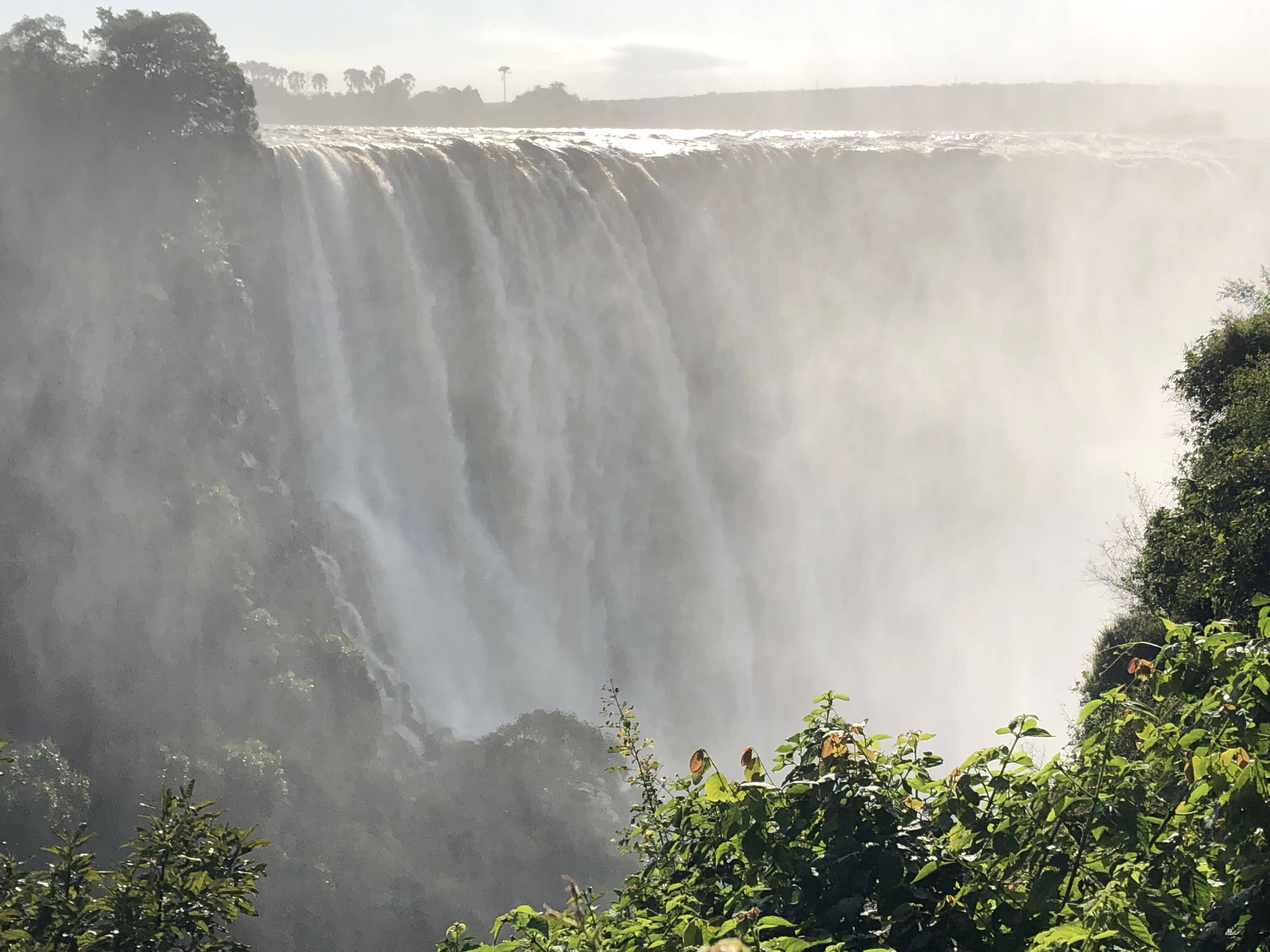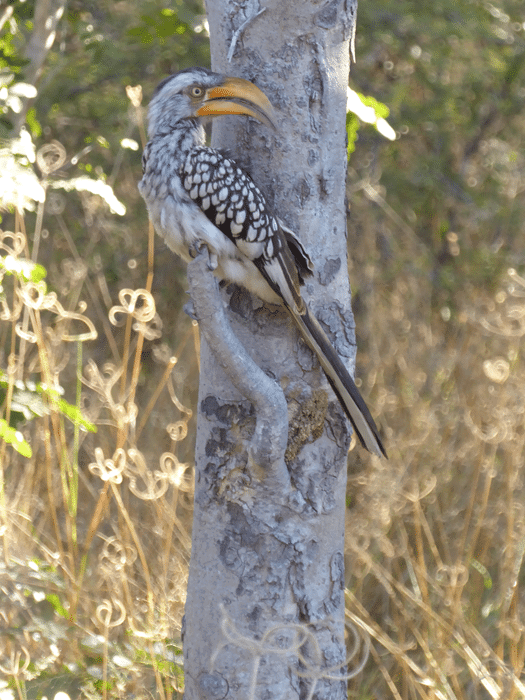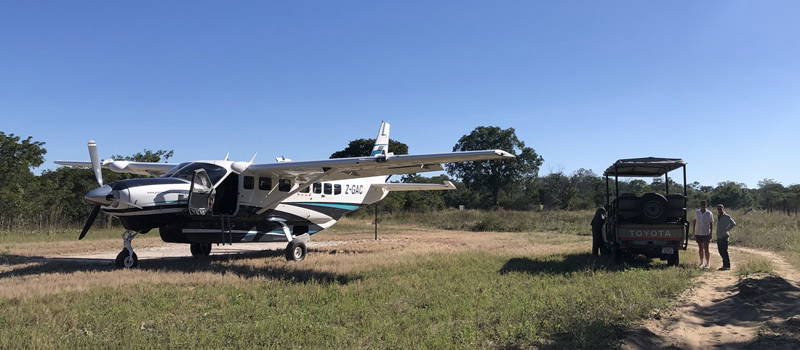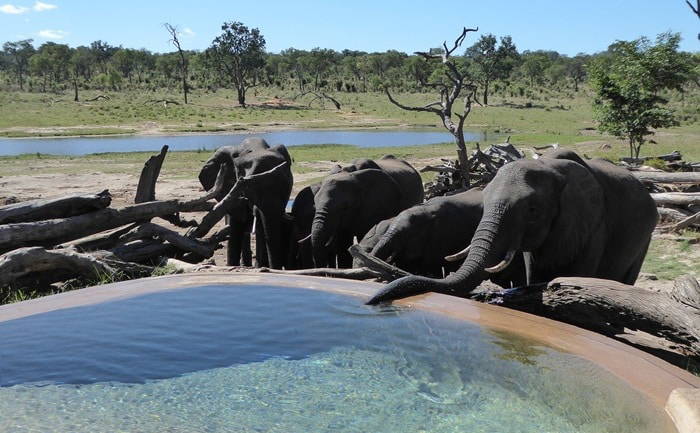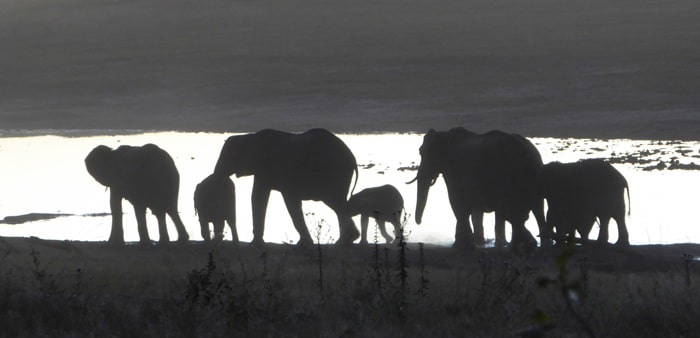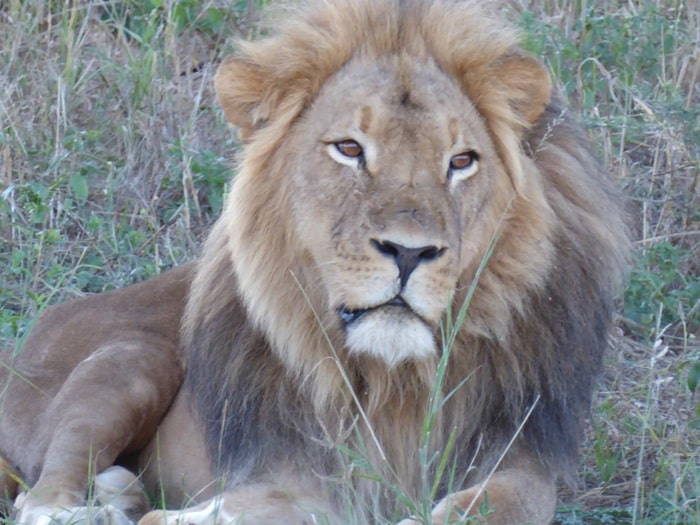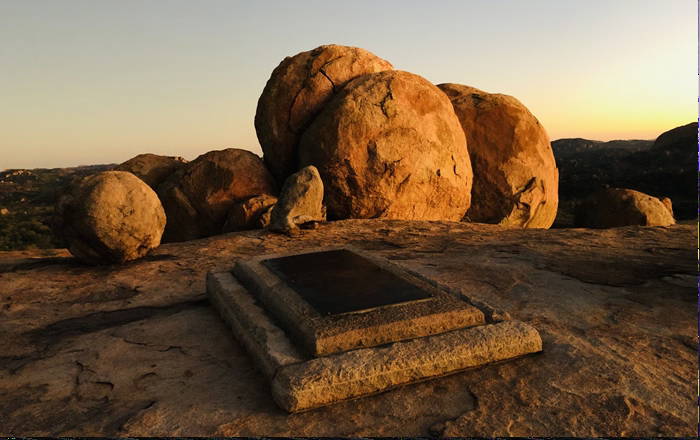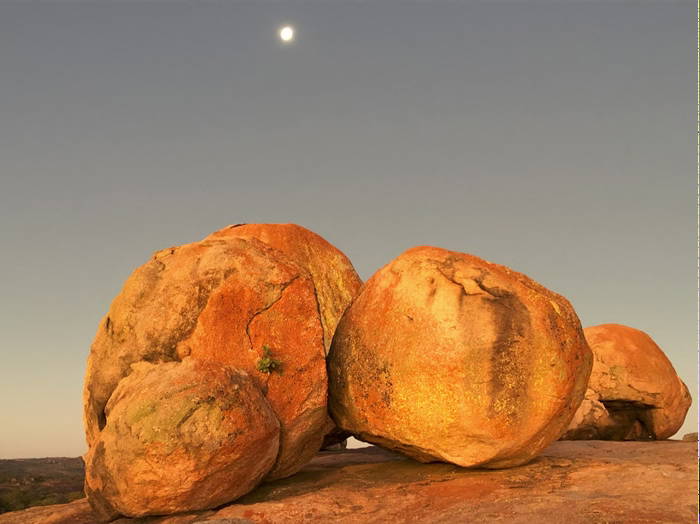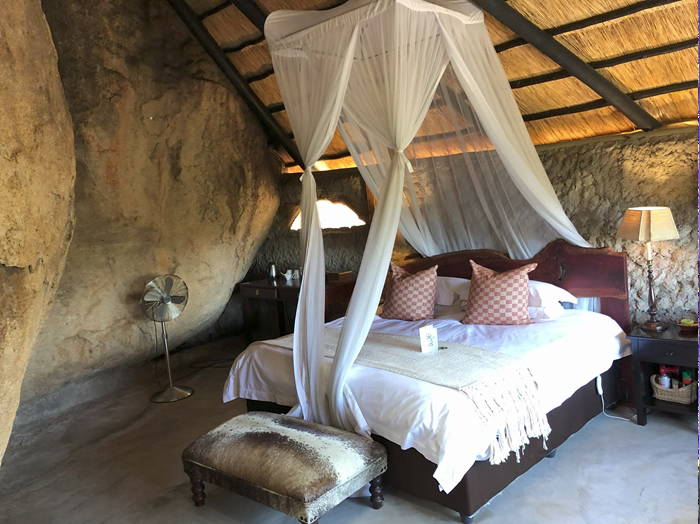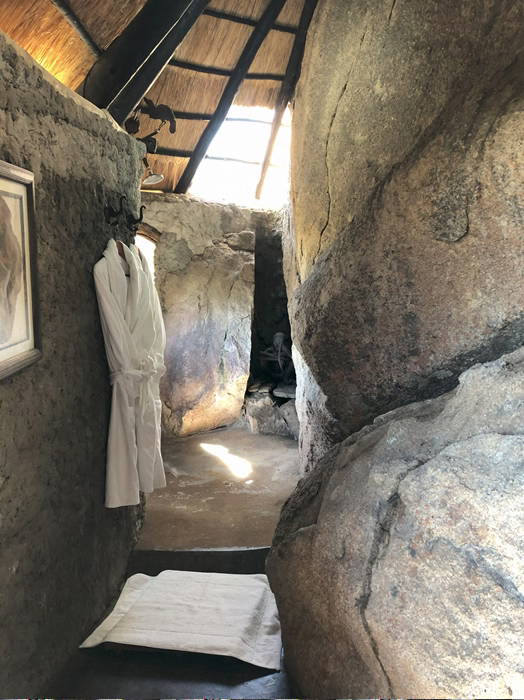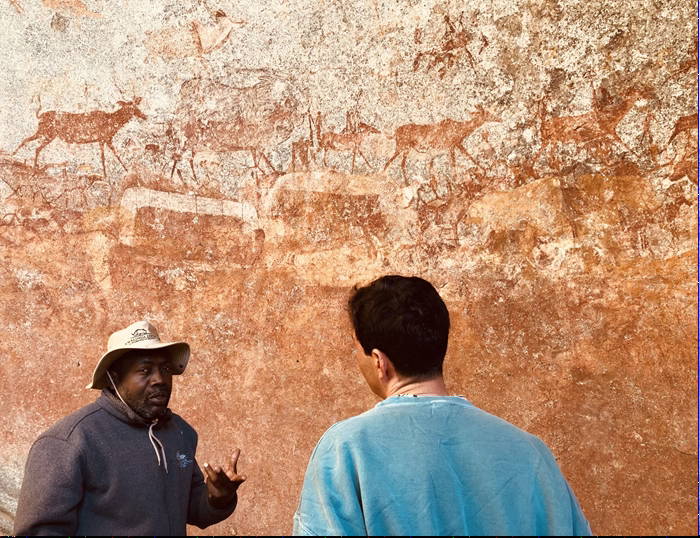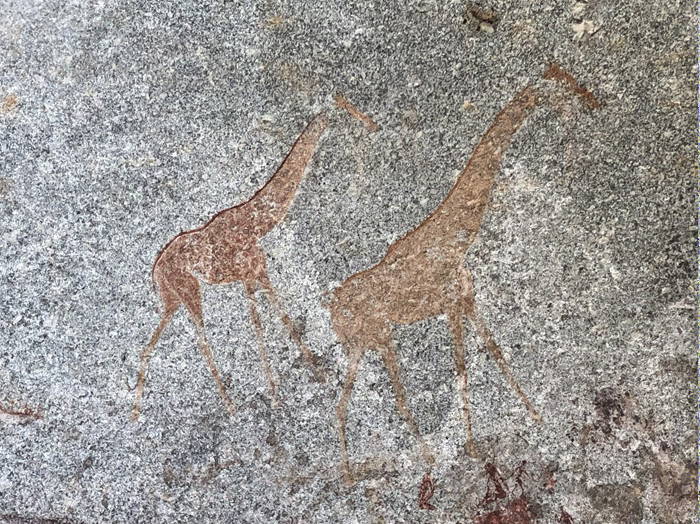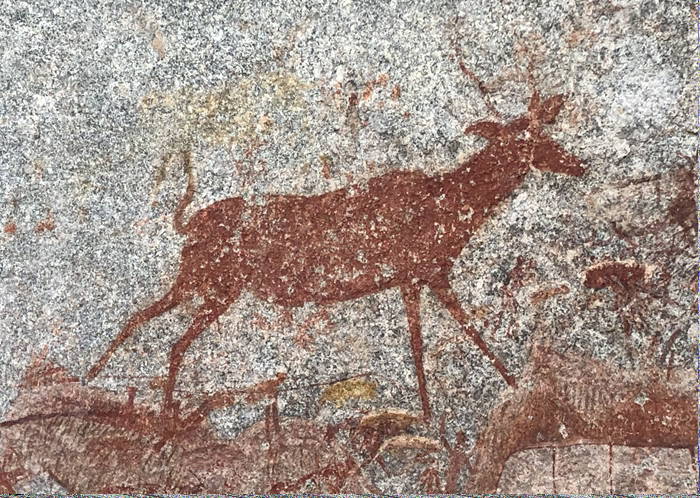Richly deserving its reputation as one of the foremost safari destinations in Africa, Zimbabwe is recovering from two decades of political turmoil and is beginning to find its feet again. Rob has just returned from a fact-finding mission with three other similarly enthused travel consultants, discovering what ‘Zim’ has to offer.
We arrived mid-afternoon into Victoria Falls and had a distant first preview of the mighty ‘Smoke That Thunders’ from the manicured back lawn of the Victoria Falls Hotel. A huge cloud of water spray extended about 150 metres into the sky above the Falls which were otherwise out of sight about half a mile away.
The next morning, we saw the Falls properly in close up and marvelled at their overwhelming power. They were at peak flow because the Zambezi is in full spate at this time of year as the wet season concludes.
Our Zimbabwean vantage point was the best possible place to see the vast wall of water as it cascaded over its Zambian cliff edge. The spray was immense and we got thoroughly soaked despite our raincoats and ponchos!
Later that morning we flew by light aircraft to Mana Pools, situated on the lower Zambezi, a 1.5-hour flight to the north-east. We spent the next two days staying at John’s Camp, a tented camp 200 yards from the river.
The camp’s location above the river plain means wildlife regularly comes along and our first night’s meal was interrupted by an elephant casually ambling past.
Mana Pools is one of the most visually stunning game reserves in Africa with a mountainous backdrop into Zambia and in May when we visited, the many pools were full and some were smothered with water lilies.
Its also famous for being one of the very best parks for walking safaris and we had great sightings of elephant and hippos whilst on foot.
Amongst our favourite sightings from our game drives were a pride of lions enjoying a late afternoon siesta …
… and the hard-won glimpse of an elusive leopard after spending an hour peering intently through a dense thicket for traces of movement from around 70 metres away…
Bird life too enjoys the many perching options the park has to offer …
Flying again by light aircraft we then crossed to the far west of the country to Hwange National Park.
After Chobe in Botswana, Hwange has the largest population of elephants in Africa and we enjoyed their always engaging company throughout our stay here.
At one of the camps the elephants enjoyed drinking from the lodge’s swimming pool more than the ample water-hole!
There was also a magical evening when we drove quietly through an open valley with around 70 elephants walking alongside our vehicle before they splashed contentedly at a swampy pool as the sun sank slowly behind them creating some lovely silhouettes.
Hwange is Zimbabwe’s most prolific game reserve and we saw plentiful wildlife during our 2-day stay.
From Hwange we drove south to our final national park – Matobo – which is known for being one of the few places where its possible to track white rhinoceros on foot.
Within a few hours of arriving, we were walking through the bush with a ranger and after a 45-minute trek we located a mother rhino with – incredibly – a 6-hour old calf. We were just able to glimpse the new-born alongside its ‘Mum’ holed up deep in the long grass.
The new arrival proved too tricky to capture in a ‘family photo’ but we were able to get a clear view of the proud mother.
Matobo is also known for its dramatic granite scenery and atop one of its many rocky summits is the grave of Cecil John Rhodes and we ascended here late evening for a wonderful sunset.
Rhodes divides opinion as a controversial figure from Zimbabwe’s past but everyone agrees he made a sublime choice for his final resting place. The setting and the 360 degree ‘World’s View’ as it is called, was superb.
Our stay at Matobo was at the renowned Amalinda Lodge which has been improbably built into the granite boulders of one of the park’s rocky outcrops. Each room was absolutely unique.
Early on our final day we hiked to the Nswatugi Cave which is one of the best locations for ancient rock art in southern Africa. Here we were enraptured by the beautiful depictions of animals and human figures painted in red ochre which date back to the Stone Age.
Our time in ‘Zim’ was now up and we drove to Bulawayo for our flight home with great memories of so many magical moments from our 9-day journey.
Zimbabwe offers world-class safari experiences amidst wondrous scenery. Get in touch if you wish to have help putting together an itinerary that will enable you to see the many highlights the country has to offer.
May to November is the most favourable time to visit. Visas can be easily obtained on arrival.
Huge thanks to Mike at Distinctive World Travel and Laura at Travel Wild for hosting this agent educational.


